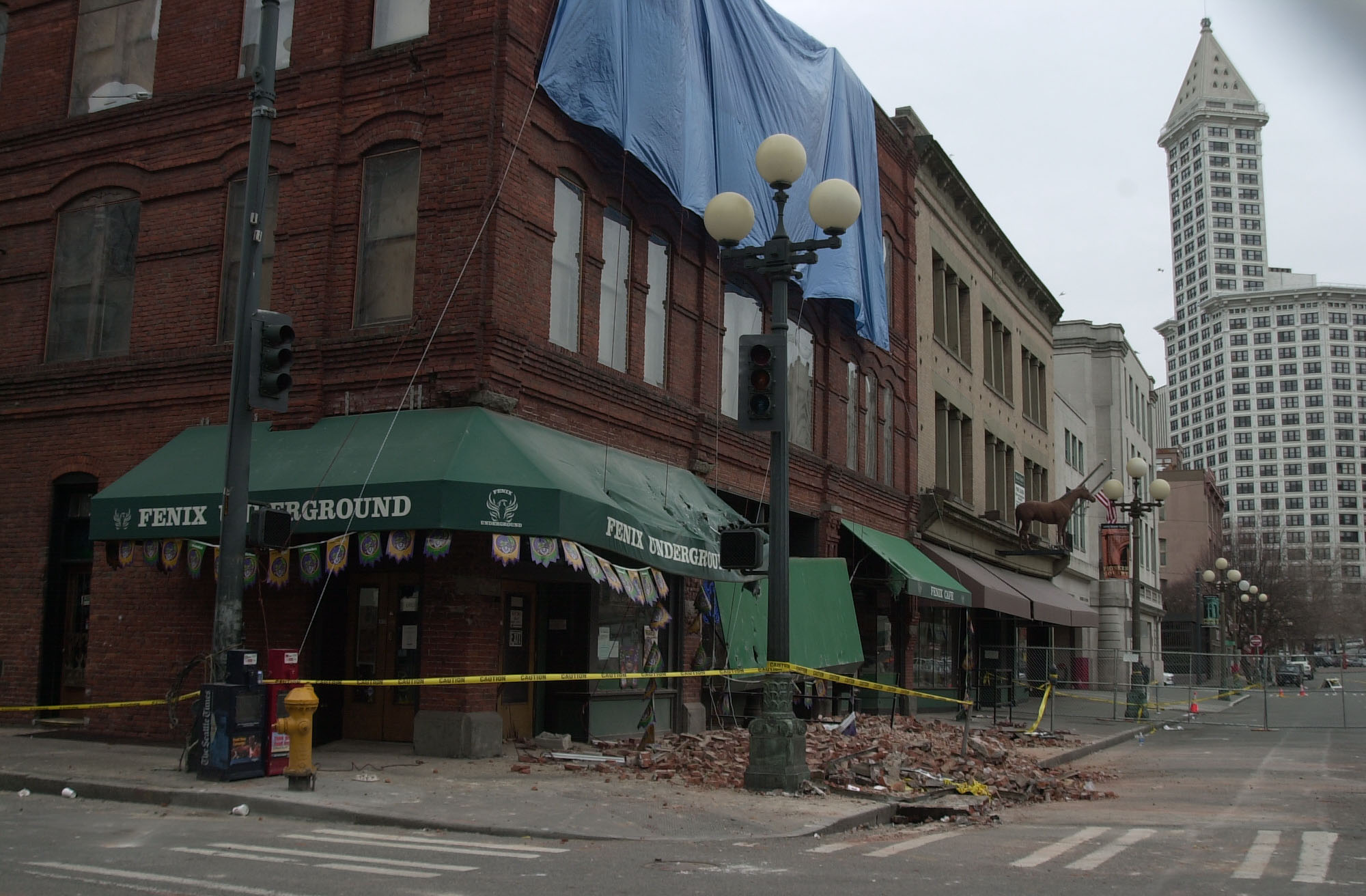15 years after the Nisqually Earthquake, King County prepares for "the big one"
Summary
On February 28, 2001, the magnitude 6.8 Nisqually Earthquake shook the Puget Sound region. Fifteen years later, King County Emergency Management is taking action to prepare for a Cascadia megaquake by participating in a multi-state, multi-agency exercise planned for this summer.
Story

Damage in Seattle's Pioneer Square after the February 28, 2001 Nisqually Earthquake. FEMA News Photo by Liz Roll
While smaller quakes have rattled King County in the last decade and a half, there hasn't been a significant earthquake since Nisqually. Thousands of new residents have moved to King County in that time, many of whom have no personal experience with earthquakes.
Washington State ranks second only to California among states susceptible to earthquake damage. Hundreds of lives could be lost in a major quake, and thousands more will be injured. The total cost of the damage and disruption to the regional economy could be in the tens of billions of dollars.
The Cascadia Subduction Zone poses a significant risk to King County and the entire Pacific Northwest. Researchers believe that when this fault moves, it could cause a magnitude 9.0 earthquake that would impact the entire West Coast. Coastal areas will likely be inundated by a tsunami following a Cascadia megaquake. Landslides and soil liquefaction caused by such a large earthquake would cause significant impacts in King County.
While no one knows when the next quake will strike, King County Emergency Management is prepared to respond. This June, the office will take part in a disaster drill called Cascadia Rising. This four-day functional exercise will involve federal, state, and local agencies from across Washington, Oregon, Idaho, and British Columbia, testing their plans to respond to a megaquake.
"As emergency planners, we understand the importance of developing strategies for how first responders and communities will work together to recovery from a disaster," said Walt Hubbard, director of King County Emergency Management. "Our participation in regional exercises like Cascadia Rising tests our capabilities and models the planning behaviors we encourage every resident to adopt."
When the next earthquake strikes, King County residents need to be ready. The key to survival is Drop, Cover, and Hold On. When the ground starts shaking:
- DROP to the floor.
- Take COVER under a sturdy table, desk, or chair.
- HOLD ON until the shaking stops.
Since infrastructure and services could be disrupted for weeks following a catastrophic earthquake, residents should plan now to be self-sufficient. This including having at least a three-day supply of food and water for themselves, their family, and their pets. It's also a good idea to have an emergency kit that contains supplies such as a flashlight, extra batteries, blankets, a first-aid kit, cash, and a battery-powered radio. For more information on preparing an emergency kit, visit www.MakeItThrough.org.
FOR MORE INFORMATION
Barnaby Dow, Emergency Management, 206-205-4070

 Translate
Translate

